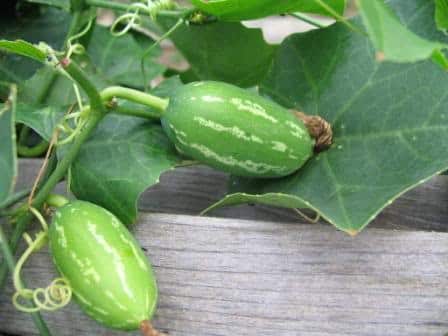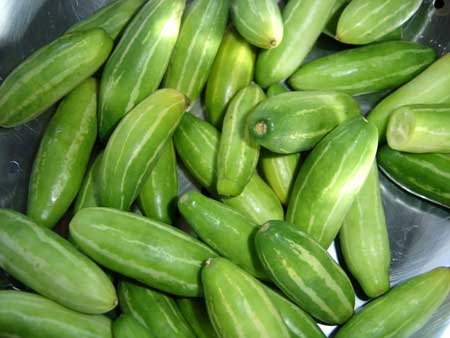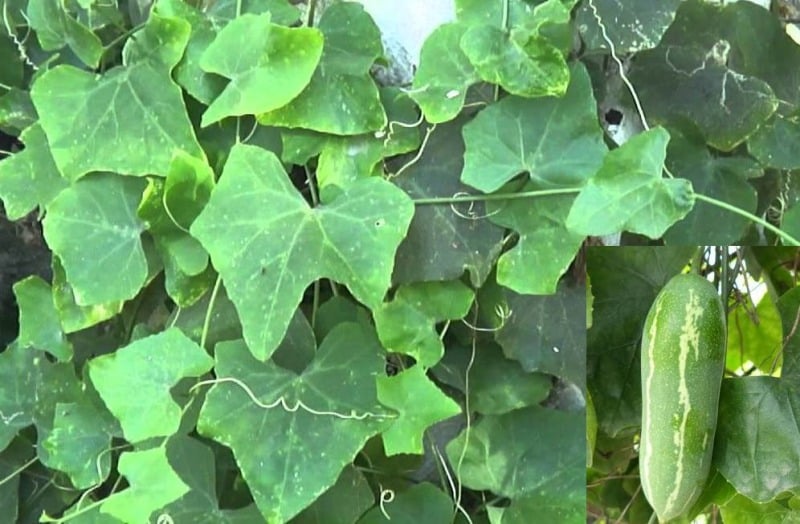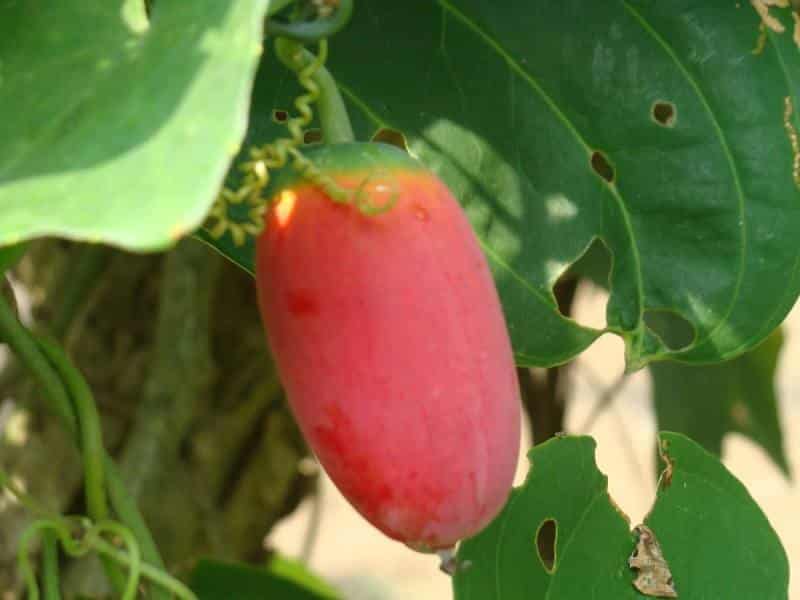A step by step guide for ivy gourd farming practices in India
Today, we learn the ivy gourd farming techniques and cultivation practices along with ivy gourd plant care, yield and harvesting procedure.

Introduction of Ivy Gourd:
Ivy gourd/Coccinia grandis is a tropical perennial plant and belongs to the same family of pumpkin (Cucurbitaceae). Ivy gourd also knows as ” baby watermelon, little gourd, gentleman’s toes” and popularly known as “Tindora/Tondli/Kundru” in India. This vine has aggressive climbing properties and spreads easily over fences, trees, shrubs, & other supports. Basically, this plant is an outdoor plant and these vegetables are being used in Indian dishes and their leaves/stem/roots are used in ayurvedic medicines. The Ivy gourd/Tindora is cultivated mainly in other countries like in tropical Africa, Malaysia, and other southeast Asian countries, & China.
Benefits of Ivy Gourd:
Some of the health benefits of Ivy Gourd / Tindora are as follows.
- Ivy gourd contains laxative properties.
- Ivy gourd may normalize blood sugar levels.
- Ivy gourd also used ayurvedic practices in India.
- Ivy gourd is a good source of vitamin C.
- Ivy gourd possesses detoxification & anti-bacterial properties.
- Ivy gourd possesses curative properties for asthma, jaundice, bronchitis, & skin problems like leprosy, scabies, and psoriasis.
- Ivy gourd juice may be helpful in keeping healthy skin.

Major Ivy Gourd Production States in India:
In India, this vegetable is widely grown in southern, eastern and western regions, mainly in states like Karnataka, Tamil Nadu, Kerala, Maharashtra, Andhra Pradesh, Gujarat, Telangana, & West Bengal.
You may also like Sweet Potato Cultivation Income, Profit, Project Report.
Local Names of Ivy Gourd in India:-
Ivy Gourd/Coccinia grandis (English), Tindora/Tondli (Hindi), Dondakaya (Telugu), Kovaikkai (Tamil), Kovaykka (Malayalam), Tondekai (Kannada), Tendli (Marathi), Tendle (Konkani), Kundru (Oriya), and Telakucha (Bengali).
Major Types of Ivy Gourd
Striped Tindora and Non-Striped Tindora.
High Yielding Improved Varieties of Ivy Gourd in India:
Sulabha, Indira Kundru-5, and Indira Kundru-35.
Climate Required for Ivy Gourd Production:
This vegetable crop thrives best in humid and warm climatic conditions. The ideal temperature range of 20°C to 32°C is best for its growth, quality and good yield. This vegetable can be cultivated throughout the year. However, peak seasons of fruiting are rainy season & summer.
Soil Requirement for Ivy Gourd Plantation:
Well-drained rich sandy loam soils are best for its cultivation. Heavy clay soils, acidic and alkaline soils should be avoided. The soil pH of 6.0 – 6.5 results in the best yield and quality of the vegetable.
Land Preparation for Ivy Gourd Sowing:
Plough the land/soil until fine tilth is achieved and to kill any weeds. Apply any well-rotted manure along with micronutrients.
Propagation and Planting Method of Ivy Gourd:
Normally this crop is propagated vegetatively through stem cuttings (in some areas by seeds, but it takes more than a year to establish a plant if they are propagated through seeds). The stem cuttings should be semi-hardwood and about 20 cm long with thickness about 2cm. The stem cuttings should have at least 4 to 6 leaves.2 or 3 cuttings should be planted about 6 cm deep with basin diameter of 60 cm. The distance between the basins should be about 2 meters.
The Best Planting Season of Ivy Gourd:
The planting should be done before rainy season/monsoon starts (June to July) or in the spring season (Feb to Mar). The ratio of female and male plant population in a field should be 10:1. As the ivy gourd plants are perennial, replanting is recommended after every 4 years. The plant vines should be supported by 2-meter bamboo sticks.
You may also check Okra Farming Cost, Profit, Project Report.
Manures and Fertilizers of Ivy Gourd Plants:
Add about 25 tonnes of Farm Yard Manure (FMY) at the time of land preparation and plantation. The fertilizer N: P: K requirement is about 60-80: 40-60: 40 kg/ha. Both manures & fertilizers should be applied every year @ flowering/fruiting stage.
Pruning of Ivy Gourd Vines:
The Tindora plants start fruiting in about 3 months after planting. Once fruiting is completed, the vines should be pruned leaving about 70 cm long vines. For each plant, about 5 kg of FMY should be applied after pruning.

Water requirement for Ivy Gourd Crop:
Irrigate the plants immediately after plantation is done. During the hot summer season, these plant requires light irrigation @ 1-week interval. Irrigation may not be required in the rainy season. Using drip irrigation will be beneficial to maintain adequate moisture during the flowering stage. As these plants are sensitive to water stagnation, make sure the soil to have well drainage to avoid water logging in the field.
Weed Control of Ivy Gourd Plantation:
In Ivy gourd farming, weeding and light hoeing should be done during the early phase of plant vine growth.
Pests and Diseases of Ivy Gourd:
Aphids, Whiteflies, Mites & Thrips are the main pests found in Ivy gourd or Tindora cultivation. Appropriate chemical control measures should be taken for these pests. In the latest improved variety “Sulabha” no major pests and diseases are known.
Harvesting of Ivy Gourd:
These vegetables will be ready for harvesting in 3 months period. Hand-picking or sickle is used to harvest the vegetable. handpicking may damage the vine, so better use a small cutter to harvest the Tindora vegetable.

The yield of Ivy Gourd:
The Tindora plant starts flowering after 2 months of planting. The average yield of 12 to 15 tonnes per hectare can be obtained with good farm management practices.
Bottom Line of Growing Ivy Gourds:
As this vegetable has good demand in local markets and this plant gives good yield within a short period of time with minimal investment, one can close their eyes and go for it.
You may also like Growing Eggplants Hydroponically.
I request your suggestions.
In our kitchen garden Ivy gourd creeper in Bangalore is healthy and lot of flowers and many baby gourds are produced. But they fall off early. Sufficient watering is being done. Will you give me advice?
Kanakaraju
Can you please what kind of nutrients are being added in the soil.
Hello, I have the same question that previous person asked. My ivy gourd creeper came out well and seeing lot of female flowers with baby gourds. But they are fall off early with dried flower. I am watering good, I also apply organic soil and blend with cow manure. I also put organic plant food and earthworm casting.
May I know the reason for this and what are remedies to resolve this problem and get the good tindoras yield.
Sometimes, healthy flowers can dry off and suddenly drop from plants due to inadequate pollination, environmental factors, low soil fertility, and thrips. As you said you have good fertilie soil, check for thrips. These insect pests may cause the floweer drop. If not, inadequate pollination might be causing this.
Female flowers fall off because they are not fertilized by pollens from male flowers. You need a female plant and a male plant. Either pollinators like bees or manual pollination is needed to fertilize female flowers.
Which fertilizer to be used for white in what quantity in what time.I am growing plant in my home.
sir
I need planting material of Sulabha variety of Ivy Gourd..for my farm near Hyderabad.
can anyone please guide me ??
hello sir , are ivy gourds self pollinating ? I have a plant growing with female flowers but not fruiting. Please reply.
i need atlest 150 cutting forplanting . please advise
What are the companion vegetable & flower plants/creepers for ivy gourd? Can Cucumber & Bottle Gourd be planted near Ivy Gourd vine?
Im growing ivy gourd in Bangalore. Wanted to experiment with growing beans on the same setup together. Would that work?